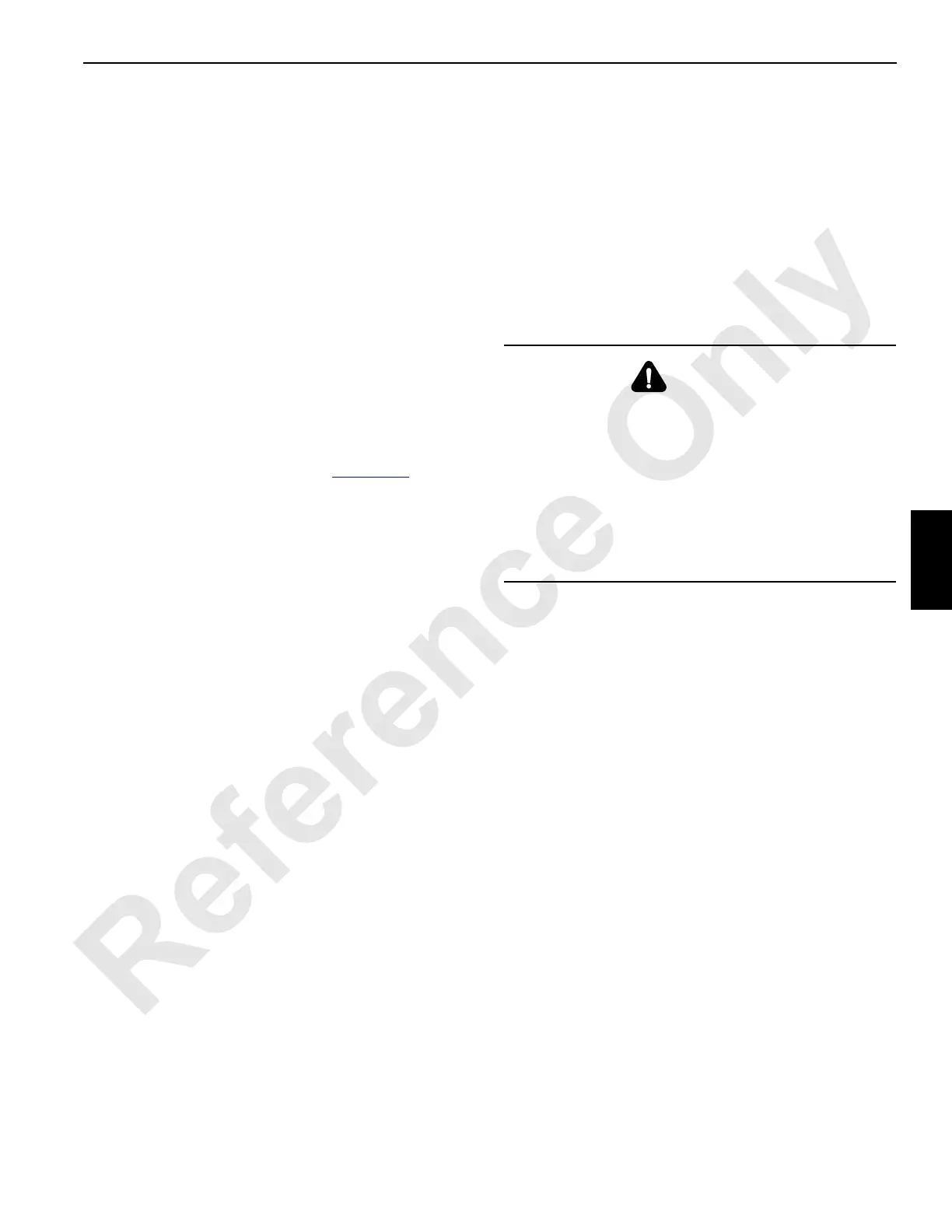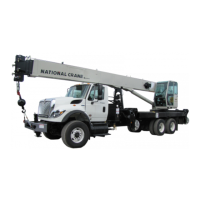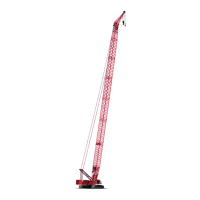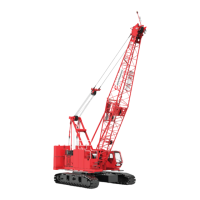Manitowoc Published 09-10-14, Control # 065-24 5-19
14000 SERVICE MANUAL HOISTS
4. Check the sheaves for uneven wear in the grooves and
on the flanges. Check for loose or wobbly sheaves.
These conditions indicate faulty bearings or bushings.
5. Check the fit of the wire rope in the groove of each
sheave. An oversize wire rope can crack the lip of the
sheave flange causing rapid wear of the wire rope and
sheave. The groove must be larger than the wire rope,
and the groove must be free of rough edges and burrs.
6. Check that the hook, the trunnion, and the swivel rotate
freely without excessive play. Faulty operation indicates
faulty bushings or bearings or inadequate lubrication.
7. Check the swivel of the hook-and-weight ball for the
following conditions:
• Overloading: Spin the swivel by hand; if the motion
is rough or has a ratchet-like effect, the swivel
bearings are damaged.
• Side loading: The swivel will turn freely in one spot
and lock-up in another. This condition can also be
checked by looking gap (4c, Figure 5-17
) between
the barrel and shank (swivel must be removed from
weight ball to check). If the gap is wide on one side
and closed on the other side, damage is present.
NOTE: The gap between the barrel and the shank is
normally 0.020 in (0,508 mm) to 0.050 in (1,27
mm). If the gap increases, swivel-bearing failure is
indicated.
8. Check the load block for signs of overloading: spread
side plates, elongated holes, bent or elongated tie-bolts,
and cracks.
9. Check all welds for defects and cracks.
10. Check the wire rope for wear and broken wires at the
point the wire rope enters the dead-end socket. Check
the socket for cracks. Tighten the wire-rope clips at the
dead end of the wire rope.
11. Check that each hook has a latch and that the hook latch
operates properly. The latch must not be wired open
or removed.
WARNING
Falling Load Hazard!
To prevent load from dropping, hook latch must retain
slings or other rigging in hook under slack conditions.
Hook latch is not intended as anti-fouling device, and
caution must be taken to prevent hook latch from
supporting any part of load.
Slings or other rigging must be seated in hook when
handling load; they must never be in position to foul hook
latch.
